
How to Use Adafruit Precision 9-DoF LIS3MDL + LSM6DSOX: Examples, Pinouts, and Specs
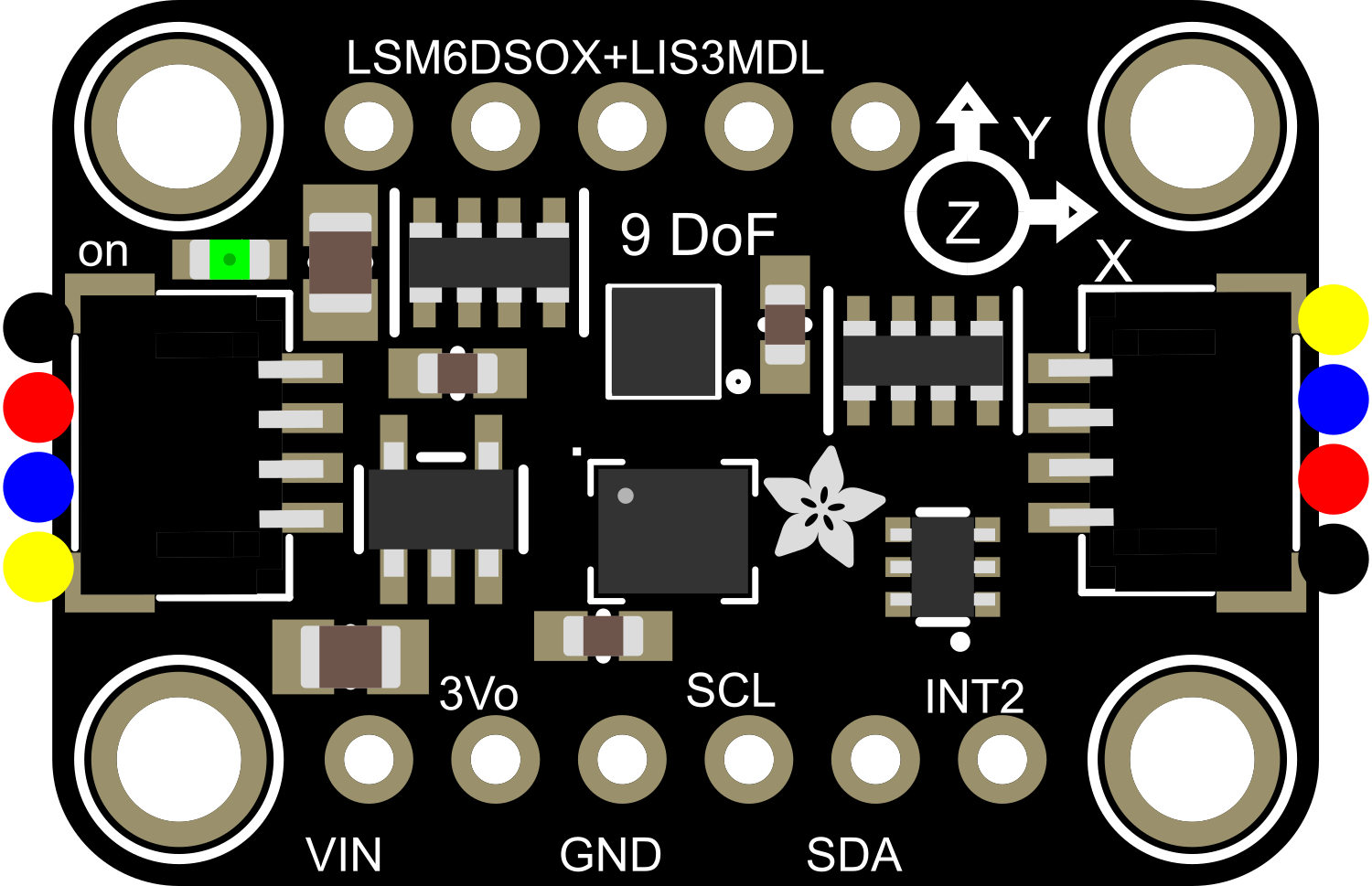
 Design with Adafruit Precision 9-DoF LIS3MDL + LSM6DSOX in Cirkit Designer
Design with Adafruit Precision 9-DoF LIS3MDL + LSM6DSOX in Cirkit DesignerIntroduction
The Adafruit Precision 9-DoF (Degrees of Freedom) LIS3MDL + LSM6DSOX is a versatile and high-precision sensor module that combines a 3-axis accelerometer and a 3-axis magnetometer. This sensor is ideal for applications requiring motion sensing, orientation, and magnetic field measurements. With its low noise and high accuracy, the module is well-suited for projects in robotics, navigation, gesture recognition, and more. It is also compatible with popular development platforms such as Arduino and Raspberry Pi, allowing for easy integration into a wide range of projects.
Explore Projects Built with Adafruit Precision 9-DoF LIS3MDL + LSM6DSOX
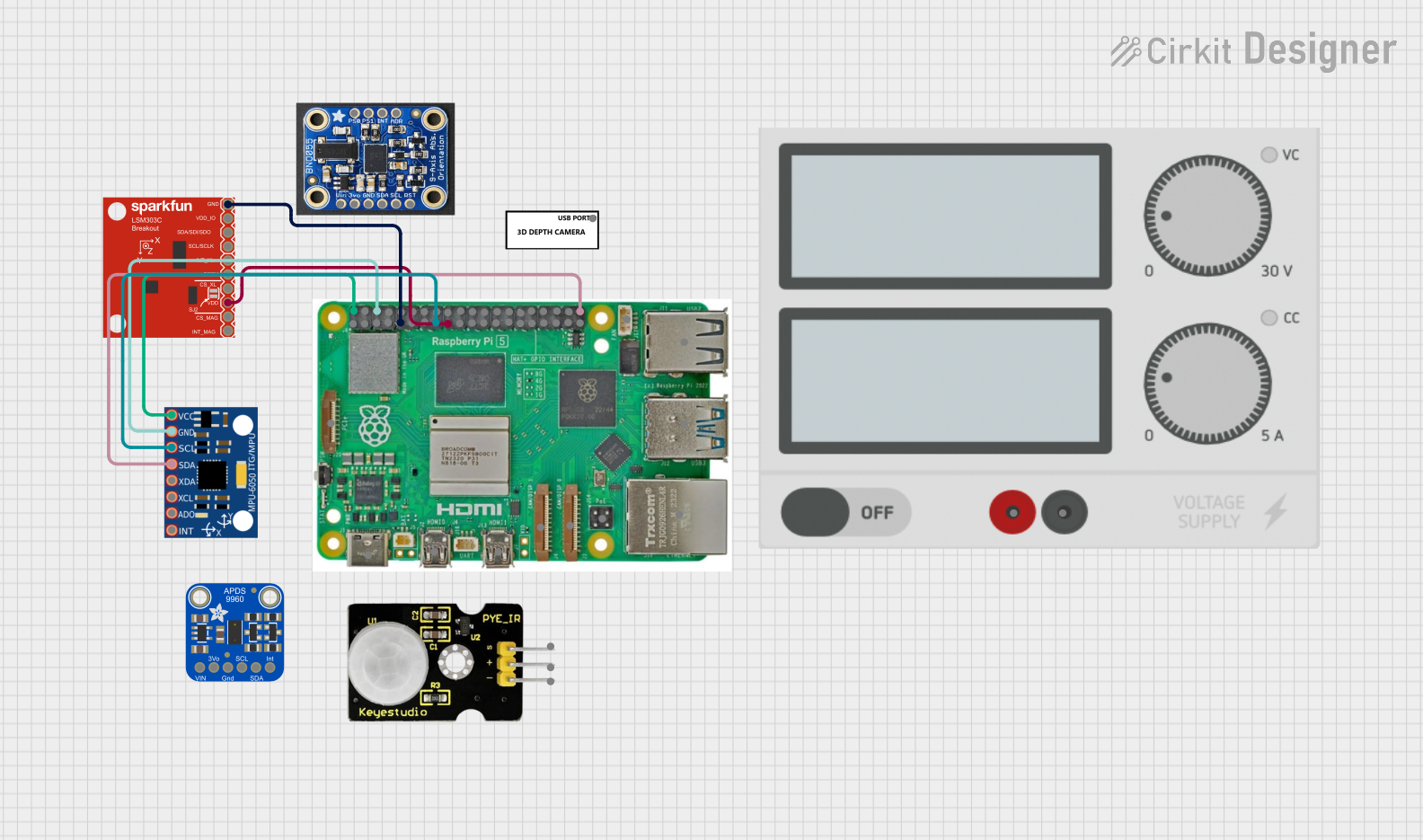
 Open Project in Cirkit Designer
Open Project in Cirkit Designer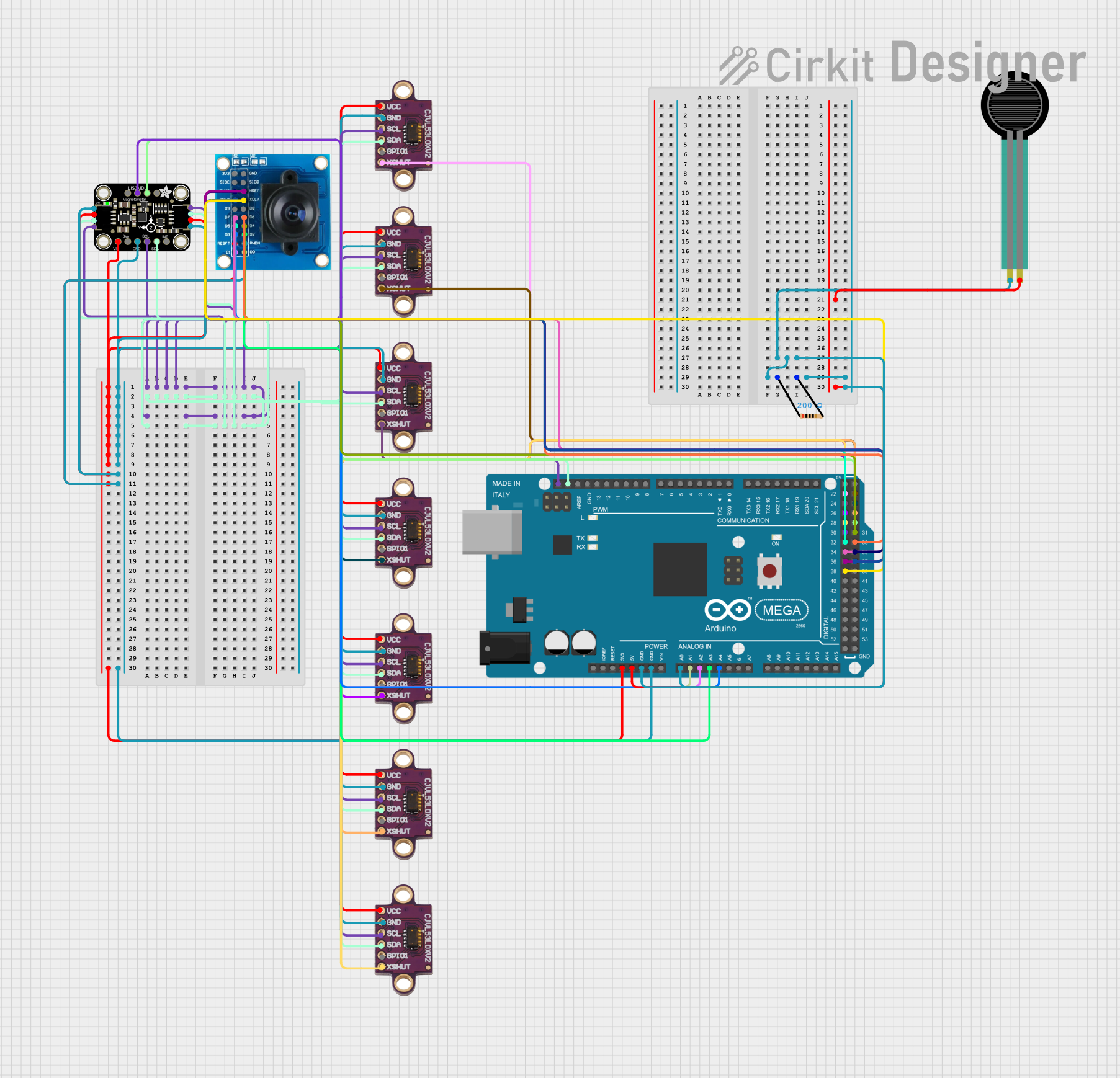
 Open Project in Cirkit Designer
Open Project in Cirkit Designer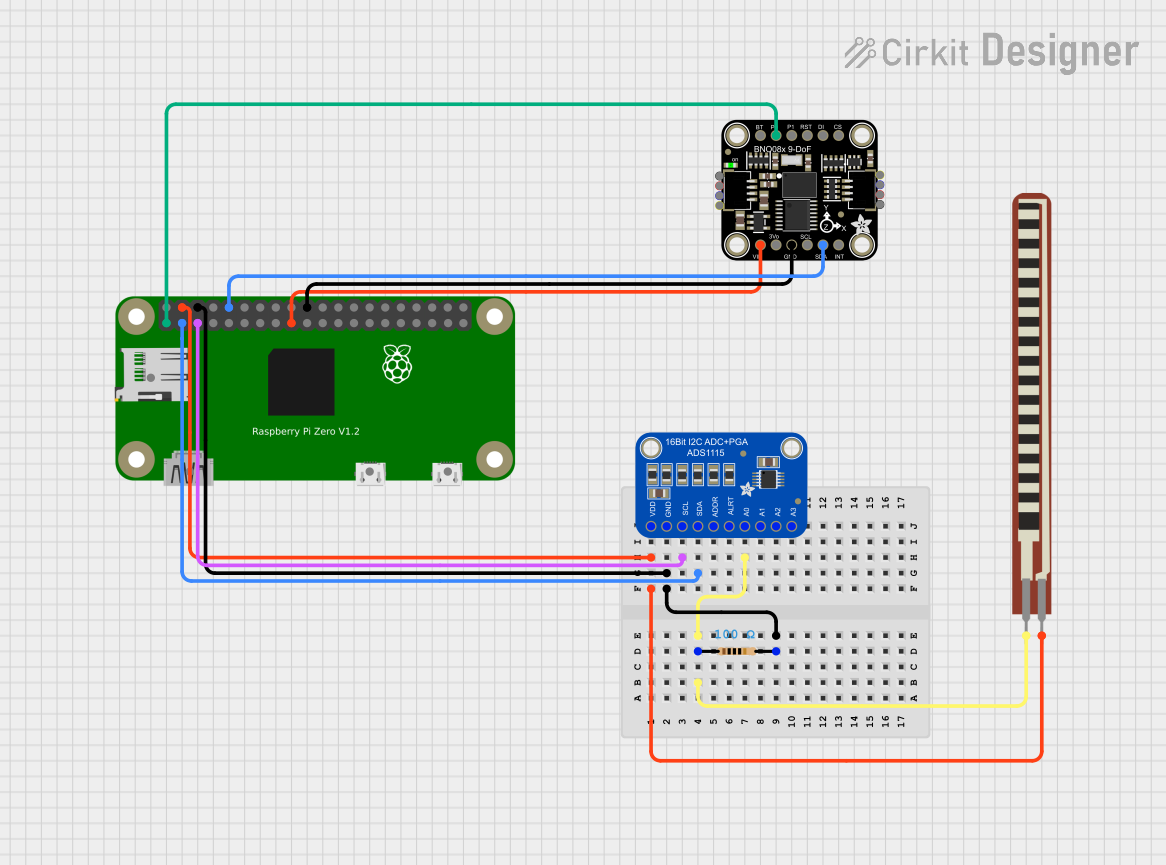
 Open Project in Cirkit Designer
Open Project in Cirkit Designer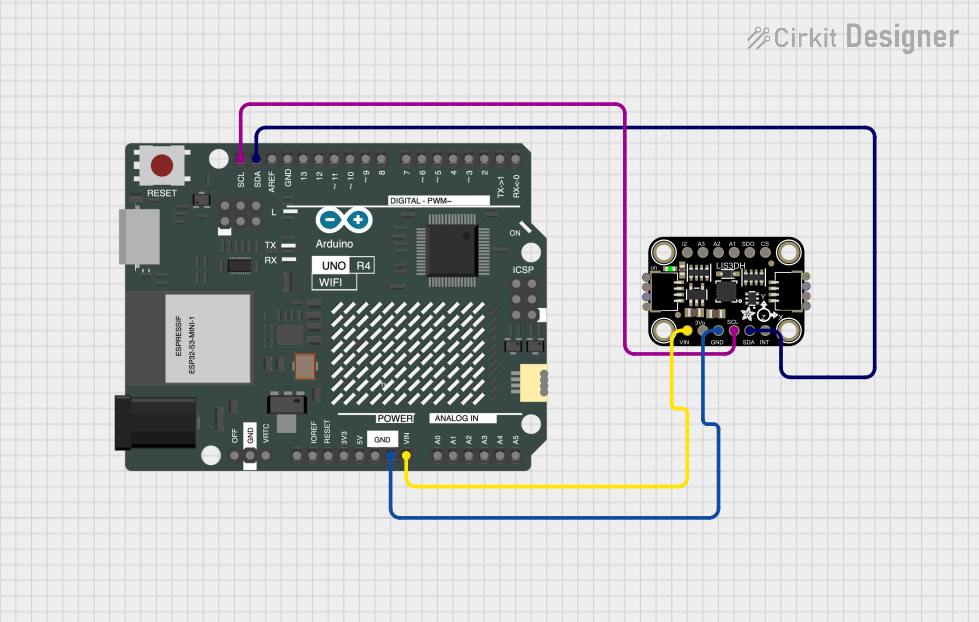
 Open Project in Cirkit Designer
Open Project in Cirkit DesignerExplore Projects Built with Adafruit Precision 9-DoF LIS3MDL + LSM6DSOX

 Open Project in Cirkit Designer
Open Project in Cirkit Designer
 Open Project in Cirkit Designer
Open Project in Cirkit Designer
 Open Project in Cirkit Designer
Open Project in Cirkit Designer
 Open Project in Cirkit Designer
Open Project in Cirkit DesignerTechnical Specifications
Key Technical Details
Accelerometer (LSM6DSOX):
- 3-axis linear acceleration measurements
- Full-scale ranges: ±2/±4/±8/±16 g
- Output data rates (ODR) up to 6.66 kHz
Magnetometer (LIS3MDL):
- 3-axis magnetic field measurements
- Full-scale ranges: ±4/±8/±12/±16 gauss
- Output data rates (ODR) up to 155 Hz
Operating Voltage:
- 2.5V to 5.5V
Communication:
- I2C and SPI interfaces
Operating Temperature Range:
- -40°C to +85°C
Pin Configuration and Descriptions
| Pin Number | Name | Description |
|---|---|---|
| 1 | VIN | Supply voltage (2.5V to 5.5V) |
| 2 | GND | Ground |
| 3 | SCL | I2C clock (also SPI clock) |
| 4 | SDA | I2C data (also SPI data input) |
| 5 | SDO/SA0 | SPI data output (also I2C address selection) |
| 6 | CS | SPI chip select (active low) |
| 7 | INT1 | Interrupt 1 (configurable) |
| 8 | INT2 | Interrupt 2 (configurable) |
Usage Instructions
Integration into a Circuit
To use the Adafruit Precision 9-DoF sensor with an Arduino UNO, follow these steps:
- Connect VIN to the 5V output on the Arduino.
- Connect GND to one of the GND pins on the Arduino.
- Connect SCL to the A5 pin (SCL) on the Arduino.
- Connect SDA to the A4 pin (SDA) on the Arduino.
- If using SPI, connect SDO/SA0, CS, and additional SPI pins as required.
Best Practices
- Ensure that the power supply is stable and within the specified voltage range.
- Use pull-up resistors on the I2C lines if they are not included on the development board.
- When using SPI, ensure that the CS pin is driven high to low before and after communication.
- Avoid placing the sensor near strong magnetic fields to prevent interference.
Example Code for Arduino
#include <Wire.h>
#include <Adafruit_Sensor.h>
#include <Adafruit_LSM6DSOX.h>
#include <Adafruit_LIS3MDL.h>
// Create sensor instances
Adafruit_LSM6DSOX sox;
Adafruit_LIS3MDL mdl;
void setup() {
Serial.begin(115200);
// Initialize the sensors
if (!sox.begin_I2C()) {
Serial.println("Failed to find LSM6DSOX chip");
while (1) { delay(10); }
}
if (!mdl.begin_I2C()) {
Serial.println("Failed to find LIS3MDL chip");
while (1) { delay(10); }
}
Serial.println("LSM6DSOX and LIS3MDL sensors found!");
}
void loop() {
// Read accelerometer and magnetometer values
sensors_event_t accel, gyro, mag, temp;
sox.getEvent(&accel, &gyro, &temp);
mdl.getEvent(&mag);
// Print the values to the Serial Monitor
Serial.print("Accel X: "); Serial.print(accel.acceleration.x); Serial.print(" m/s^2");
Serial.print(" Y: "); Serial.print(accel.acceleration.y); Serial.print(" m/s^2");
Serial.print(" Z: "); Serial.print(accel.acceleration.z); Serial.println(" m/s^2");
Serial.print("Mag X: "); Serial.print(mag.magnetic.x); Serial.print(" uT");
Serial.print(" Y: "); Serial.print(mag.magnetic.y); Serial.print(" uT");
Serial.print(" Z: "); Serial.print(mag.magnetic.z); Serial.println(" uT");
delay(100);
}
Troubleshooting and FAQs
Common Issues
- Sensor not detected: Ensure that the wiring is correct and that the sensor is properly powered.
- Inaccurate readings: Calibrate the sensor and make sure it is not affected by nearby magnetic fields.
- No data on Serial Monitor: Check the baud rate and the USB connection to the Arduino.
FAQs
Q: Can I use this sensor with a 3.3V system? A: Yes, the sensor can operate at voltages as low as 2.5V.
Q: How do I change the I2C address? A: The I2C address can be changed by connecting the SDO/SA0 pin to either ground or VIN.
Q: What is the maximum sampling rate? A: The accelerometer can sample up to 6.66 kHz, and the magnetometer up to 155 Hz.
For further assistance, consult the Adafruit support forums or the community resources available for your development platform.